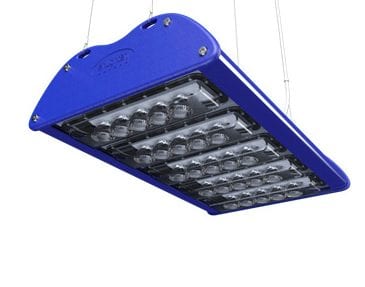In my travels around Australia, I have had many many conversations along the following lines: “I’m an emerging cleantech company with an amazing technology and all I need is investment of $X million and I will then be successful.”
While investment can be essential for some, it is only part of the story. To be successful, an emerging technology company needs credibility, a solution which solves a problem for its customers, channels to market and partnerships that will bring its solution to fruition. A fat cheque will not buy all of this.
Now in its third year and with entries closing on 3 June, the Australian Clean Technologies Competition finds and fosters Australia’s best cleantech companies. The competition mentors and promotes innovative SMEs that are developing or delivering technologies or services that address energy, water, waste and pollution solutions. Entrants can be start-up companies with new technologies or mature companies with less than 100 FTE employees that have great products.
This year the competition has also teamed up with industry associations to provide access to specific sectors such as Mining, Manufacturing, the Built Environment and, through Dairy Australia, to the Food & Beverage sector.
In addition, to assist with industry development for the renewable energy sector, the Australian Renewable Energy Agency is supporting the ARENA Renewable Energy Award. There will also be an overall winner of Australia’s best cleantech company which will represent Australia in the global finals in California in November.
Following its 2011 win, SMAC benefitted significantly from the enhanced credibility and exposure provided by the competition. This resulted in the company winning a contract for 90 hospitals in Thailand and completing its first installation in the US. The company provides retrofit solutions for commercial air-conditioning systems and can reduce energy bills by up to 80 per cent.
The 2012 competition winner, enLighten Australia, came fourth at the global Clean Technologies Open with its LED lighting products which provide energy savings of up to 93 per cent. Since its win, the company has secured multi-property rollout installations for its Chamaeleon light from key commercial property clients such as Mirvac, AMP Capital, GPT, Colonial First State. “The 2012 Cleantech Competition win has further increased our profile as an LED lighting technology innovator,” Steve Cahill, enLighten Australia’s general manager said.
Other success stories from the competition from its first two years include:
Low Emissions Hydrogen Production: AquaHydrex – 2011 Finalist: This spin-out company from the University of Wollongong secured venture capital investment from the US-based True North Venture Partners (TNVP) to commercialise its low-cost, low-emissions hydrogen production technology. The investor interest came about as a direct result of the competition publicity. TNVP is a $300 million venture capital fund that seeks to identify disruptive innovations in the areas of energy, water, waste, and agriculture.
A Shower That Saves Lives: CINTEP – 2012 Top 30: Nick Christie is doing for the shower what James Dyson did for the vacuum cleaner. His recirculating shower uses 70% less water and energy than your shower at home. It also has the potential to save lives. CINTEP is in discussions for use in forward
operating bases for armies where its use would mean less water requiring transport, fewer transport convoys and ultimately less deaths. This 2012 Top 30 Company has made significant progress in the last 12 months and will be launching its first products in late 2013.
Beer Bottles into Fertiliser: MaxSil – 2012 Finalist: Whilst sitting on his veranda in Toowoomba, David Archer noticed a strange phenomenon – the grass of his paddock grew more where there was broken glass. He knew glass contained silicon and the use of silicon fertilisers was well established. But he thought ‘what if you could make a silicon fertiliser out of broken glass that would otherwise end up in landfill?’ Well that’s exactly what David did.
His company, Silicon Fertilisers is now producing its MaxSil fertiliser that has been proven to increase crop yields by up to 25%, as well as reducing losses to pests and disease, and increasing nutrient uptake. All this thanks to a few broken beer bottles!
Windows That Power Your Home: TropiGlas – 2012 Finalist: Tropiglas is the only clear, solar power generating glass in the world. Imagine having windows in your home that could provide you with electricity, or having the electrics in your car powered by your windscreen. Since being a 2012 Finalist, the company has connected with global glass manufacturers, has completed its demonstration production run and is looking to launch its initial Low-E Glass product in late 2013. The benefits of publicity, credibility and access to investors and markets are prizes that money cannot buy. The aim of the competition is enable as many of the Top 30 companies to become successful and establish a thriving cleantech sector. In addition, through providing solutions, these solutions will enable existing industry to become more efficient, competitive and productive.
The 2013 Top 30 companies will be mentored over a two month period and be invited to attend a trade mission to Hong Kong, China and Singapore to meet potential customers, partners and investors. The competition is a key initiative of the Clean Technologies Supplier Advocate, Dr Marc Newson.
For further information on how you can participate in the Australian Clean Technologies Competition visit www.cleantechcomp.com.au. Entries close on 3 June 2013










